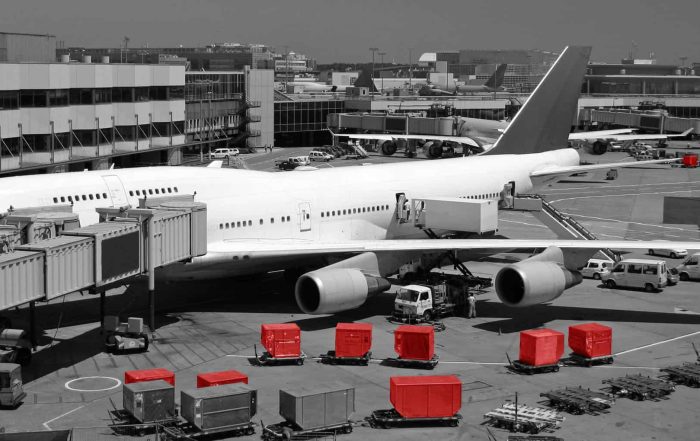Understanding the intricacies of hazmat logistics is not only about compliance but also about cultivating a culture of safety and preparedness. Every stakeholder in the logistics chain, from manufacturers to end-users, plays a pivotal role in ensuring that hazardous materials are transported without incident. This involves continuous learning and adapting to new regulations and technologies. As the global landscape of hazmat logistics evolves, staying informed and proactive is key to maintaining safety and efficiency in operations.
Understanding Hazmat Shipping
Hazardous materials, or “hazmat,” encompass substances that pose potential risks to health, safety, property, or the environment. These include chemicals, biological agents, radioactive materials, and even certain consumer goods. The transportation of hazmat materials is governed by strict regulations at both national and international levels to prevent accidents and ensure public safety.
Each category of hazardous material presents unique challenges and demands specific handling and transportation measures. Regulations can vary significantly between countries and regions, requiring logistics managers to navigate these differences expertly for seamless cross-border transportation.
The Regulatory Framework
Compliance with regulatory frameworks is crucial, including:
-
IATA Dangerous Goods Regulations (air freight)
-
International Maritime Dangerous Goods (IMDG) Code (sea freight)
-
U.S. DOT Hazardous Materials Regulations (HMR) (US-based transport)
These regulations stipulate the classification, packaging, marking, labeling, and documentation requirements for transporting hazardous goods. Adhering to these frameworks not only ensures safety but also fosters trust among stakeholders and regulatory bodies.
Non-compliance can result in severe penalties, including fines and legal action, underscoring the importance of adhering to these guidelines. Beyond the financial implications, non-compliance can tarnish an organization’s reputation and disrupt operations. Leveraging technology, such as compliance software, can assist in monitoring and adhering to these complex regulations, thereby reducing the risk of oversight.
Classification of Hazardous Materials
Accurately classifying hazardous materials based on their properties is essential. The nine hazmat classes include:
-
Explosives
-
Gases
-
Flammable Liquids
-
Flammable Solids
-
Oxidizing Substances and Organic Peroxides
-
Toxic and Infectious Substances
-
Radioactive Materials
-
Corrosive Substances
-
Miscellaneous Dangerous Goods
Accurate classification is essential for ensuring the correct handling and packaging procedures are followed. Misclassification can lead to inappropriate handling, which increases the risk of accidents. Therefore, logistics managers must have a deep understanding of the material properties and consult experts if needed to ensure correct categorization. This not only minimizes risk but also optimizes the transportation process by ensuring that each material is handled in the most efficient manner possible.
Packaging and Labelling Requirements
The packaging of hazardous materials is one of the most critical aspects of safe transport. It must be robust enough to withstand the rigors of transit and prevent any leakage or spillage. Packaging requirements vary depending on the material’s classification and the mode of transport. Ensuring that packaging meets the necessary standards is not just a regulatory requirement but a key component of risk management.
UN Specification Packaging
UN specification packaging is designed to meet rigorous testing standards to ensure safety during transport. It includes specific instructions on the types of materials that can be transported, the maximum allowable weight, and the method of closure. This type of packaging is subjected to tests that simulate conditions such as stacking, drop, and pressure to verify its integrity under stress.
Adhering to UN specifications helps prevent incidents during transit and assures all stakeholders that the materials are being transported safely. This assurance is crucial for building trust with partners and clients. Logistics managers should work closely with packaging suppliers to ensure that all materials comply with these specifications, as even minor deviations can lead to significant safety risks.
Labeling and Marking
Proper labeling and marking are non-negotiable elements of hazmat shipping. Labels provide vital information about the nature of the hazard and the precautions that should be taken. This includes hazard class labels, handling labels, and orientation arrows. Markings must clearly display the UN number, proper shipping name, and any additional handling instructions.
Effective labeling is critical for communication throughout the supply chain, ensuring that everyone from handlers to emergency responders can quickly identify the nature of the hazard. This clarity is crucial in preventing accidents and ensuring quick, appropriate responses in the event of an emergency. Investing in clear, durable labels and regularly auditing labeling processes are essential practices for maintaining compliance and safety.
Documentation and Training
Documentation ensures all involved parties understand transport risks and responsibilities. Key documents include:
-
Shipper’s Declaration for Dangerous Goods This document certifies that the goods have been packaged, labeled, and declared according to the relevant regulations. It is a formal statement that underscores the shipper’s commitment to compliance.
-
Bill of Lading (BOL) A detailed list of a shipment of goods in the form of a receipt. It serves as a contract between the shipper and carrier and provides proof of shipment.
-
Safety Data Sheets (SDS)Provide detailed information about the chemical properties, hazards, and handling precautions of the materials. These sheets are crucial for educating handlers and responders about potential risks.
Accurate and complete documentation is vital for legal compliance and operational transparency. Logistics managers should implement robust systems for managing documentation, ensuring that all records are easily accessible and regularly updated. This not only aids compliance but also enhances operational efficiency by reducing the risk of delays and errors.
Training Requirements
Personnel involved in the transportation of hazardous materials must receive specialized training tailored to their specific responsibilities. This training ensures they understand the regulations, recognize hazards, and know how to respond to emergencies. Regular refresher courses are essential to stay updated on regulatory changes. Effective training programs are not just about meeting legal requirements; they are about empowering employees to perform their duties safely and confidently.
Training should cover a range of topics, from regulatory requirements to emergency response procedures, and be tailored to the specific roles and responsibilities of each employee. Investing in comprehensive training programs demonstrates an organization’s commitment to safety and can significantly reduce the likelihood of incidents. Moreover, fostering a culture of continuous learning and improvement within the logistics team can enhance overall safety and efficiency.
Risk Management and Safety Protocols
Managing the risks associated with transporting hazardous materials is a continuous process that involves identifying potential hazards, assessing risks, and implementing control measures. It requires a proactive approach to anticipate and mitigate risks before they become incidents.
Risk Assessment
Risk assessment is a systematic process used to identify potential hazards, evaluate the risks associated with them, and determine the necessary control measures to mitigate these risks. This involves analyzing the entire logistics chain, from packaging to final delivery. Conducting thorough risk assessments helps organizations prioritize resources and focus on the most significant risks.
Regular risk assessments are essential to adapt to changes in materials, processes, or regulations. They provide a framework for making informed decisions about risk management and help build a culture of safety within the organization. Engaging cross-functional teams in the risk assessment process can enhance the effectiveness of these evaluations by incorporating diverse perspectives and expertise.
Emergency Response Plans
In the event of an incident, having a comprehensive emergency response plan is crucial. This plan should include procedures for containment, notification, and mitigation of the incident’s impact. Coordination with local authorities and emergency services is often necessary. A well-prepared emergency response plan not only minimizes harm but also reassures stakeholders that the organization is capable of handling crises effectively.
Developing an effective emergency response plan involves regular drills and scenario planning to ensure all personnel are prepared to respond swiftly and effectively. It is also important to review and update these plans regularly to incorporate lessons learned from past incidents and changes in regulations or operations. A robust emergency response capability is a cornerstone of risk management and can significantly mitigate the impact of any incidents that do occur.
Choosing the Right Freight Options
Selecting the appropriate mode of transport for hazardous materials is a strategic decision that impacts both cost and safety. Each mode of transport—air, sea, road, or rail—has its own set of regulations and constraints. Understanding these differences is crucial for optimizing logistics operations and ensuring compliance.
Air Freight
Air freight is suitable for time-sensitive shipments, but it comes with stringent security and packaging requirements due to the potential risks associated with air transport. The IATA Dangerous Goods Regulations are particularly critical for air shipments, dictating specific standards that must be met.
Choosing air freight requires careful consideration of the balance between speed and cost, as well as the additional safety measures that must be implemented. This mode of transport often involves higher costs, but the benefits of rapid delivery can outweigh these expenses for certain shipments. Logistics managers must weigh these factors carefully to determine the most appropriate transport method for their needs.
Sea Freight
Sea freight is often used for bulk shipments and provides an economical option for transporting hazardous materials. However, it requires careful planning to comply with the IMDG Code. This mode is well-suited for non-urgent shipments and offers considerable cost savings, especially for large volumes.
Choosing sea freight involves coordinating with shipping lines and port authorities to ensure compliance with international regulations. The longer transit times must also be factored into logistics planning, as they can affect inventory management and customer delivery expectations. Despite these challenges, sea freight remains a viable option for many organizations due to its cost-effectiveness and capacity for large shipments.
Road and Rail Transport
Road and rail offer flexible domestic options. Compliance with regional regulations is critical, making these ideal for short-to-medium distances. They provide a versatile option for reaching destinations not served by air or sea routes, making them indispensable for many logistics operations.
Selecting road or rail transport involves understanding the specific regulations that apply to each mode and ensuring that all vehicles and personnel are compliant. These transport options can be particularly effective for short-to-medium-distance shipments, where they offer a balance of speed and cost. Logistics managers should consider these modes when planning routes and schedules to optimize efficiency and compliance.
Conclusion
Shipping hazardous materials safely and legally is a complex but manageable task with the right knowledge and preparation. Understanding the regulatory requirements, ensuring proper classification, packaging, and labelling, and implementing effective risk management strategies are all essential components of a successful hazmat shipping operation. These elements work in concert to protect both the public and the environment from the potential dangers associated with hazardous materials.
By following these guidelines and leveraging strategic freight options, logistics managers can ensure that their hazardous materials reach their destination safely, efficiently, and in compliance with all legal requirements. This not only minimizes risks but also enhances the overall efficiency and reliability of their shipping operations. Effective hazmat logistics is a testament to an organization’s commitment to safety and excellence, fostering trust and confidence among clients, regulators, and the public. With 35 years in business, K&L Freight can provide you with up to date guidance on the industry and cost – effective solutions for your international freight needs. Contact us today
RELATED POSTS
AOG Logistics: How We Move Aircraft Parts Fast
When an aircraft is AOG (Aircraft on Ground), every minute matters. Maintenance teams need the right part in the right[...]
Repatriation Logistics: Getting it Right Every Time
When a death occurs overseas, families need clear, compassionate support to arrange repatriation—the safe return of their loved one’s remains[...]


